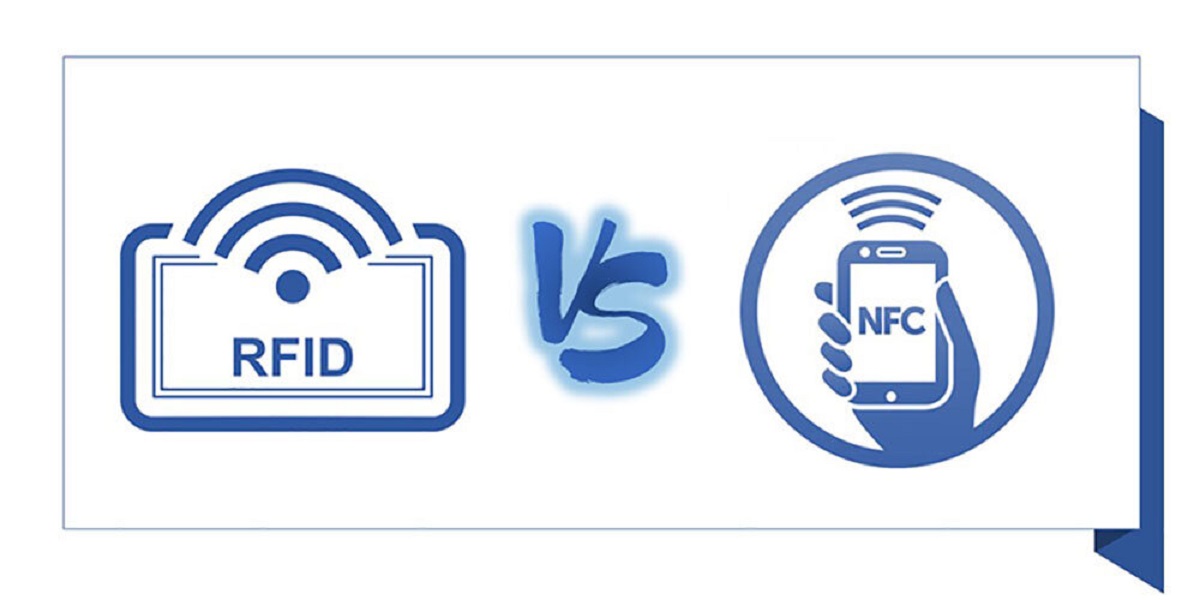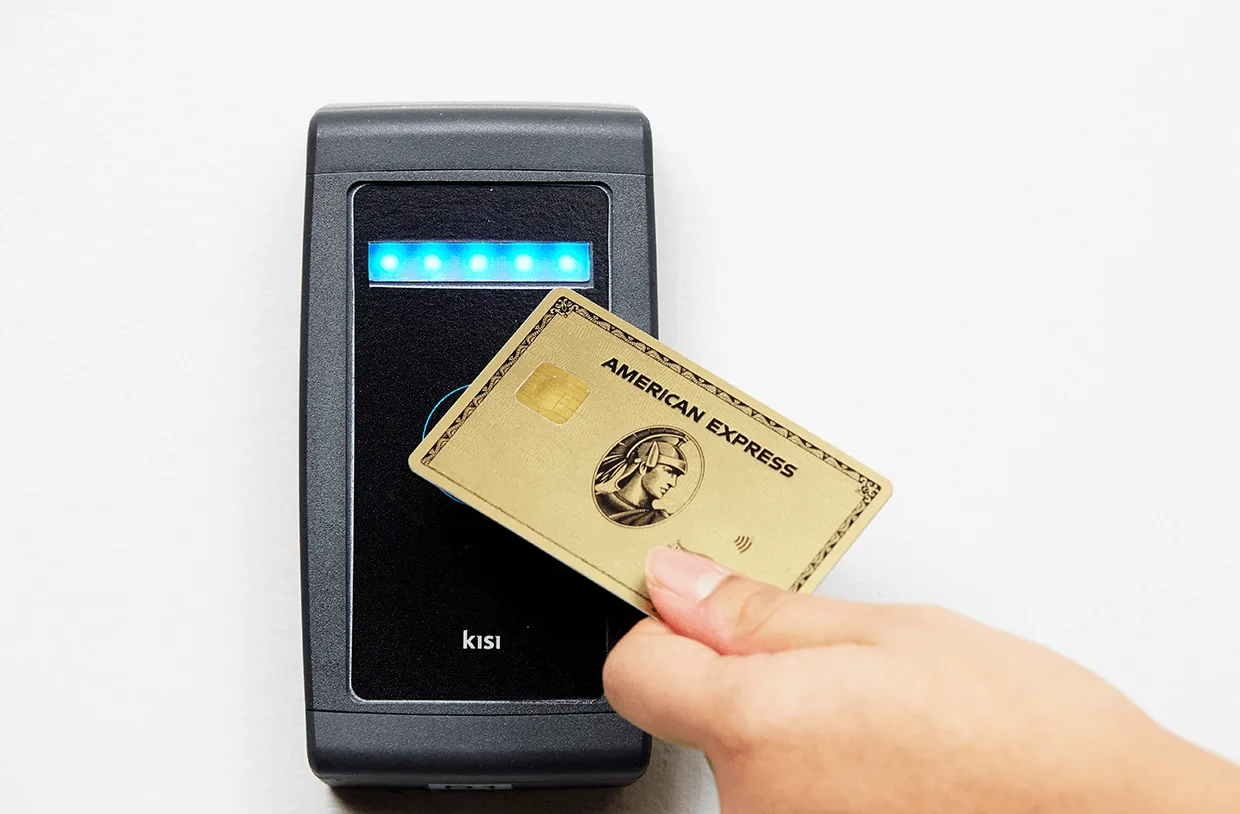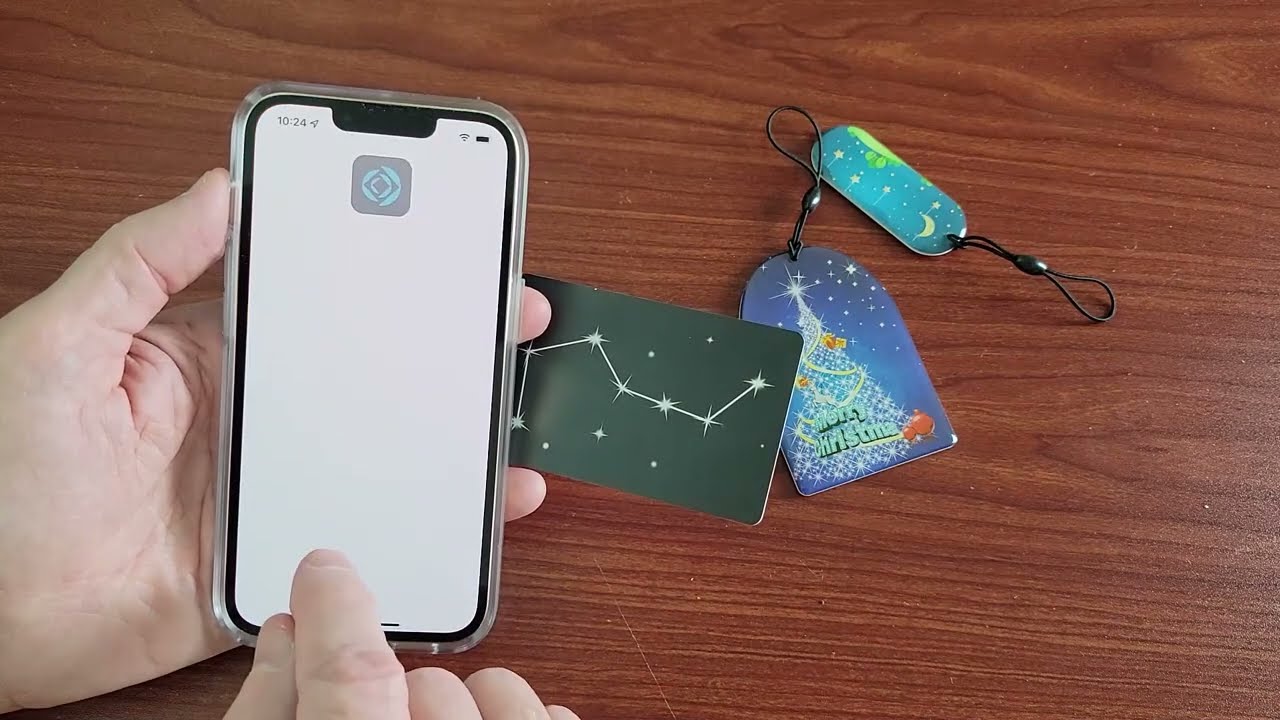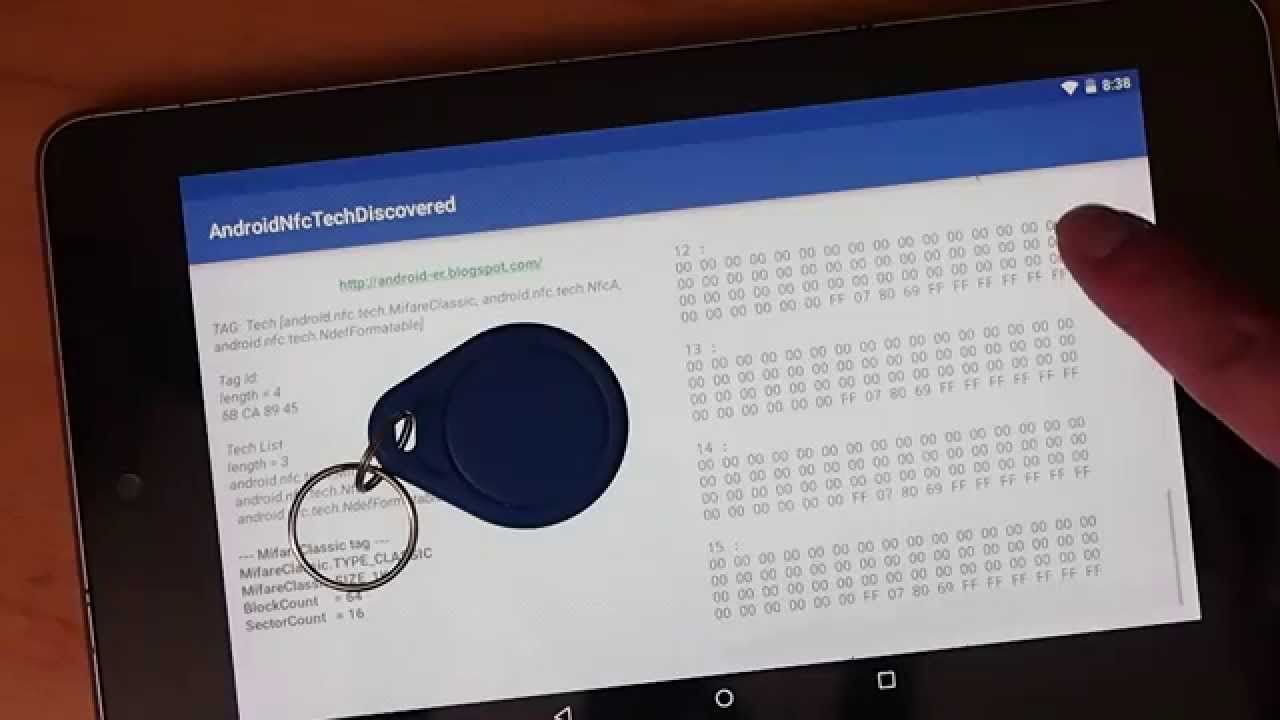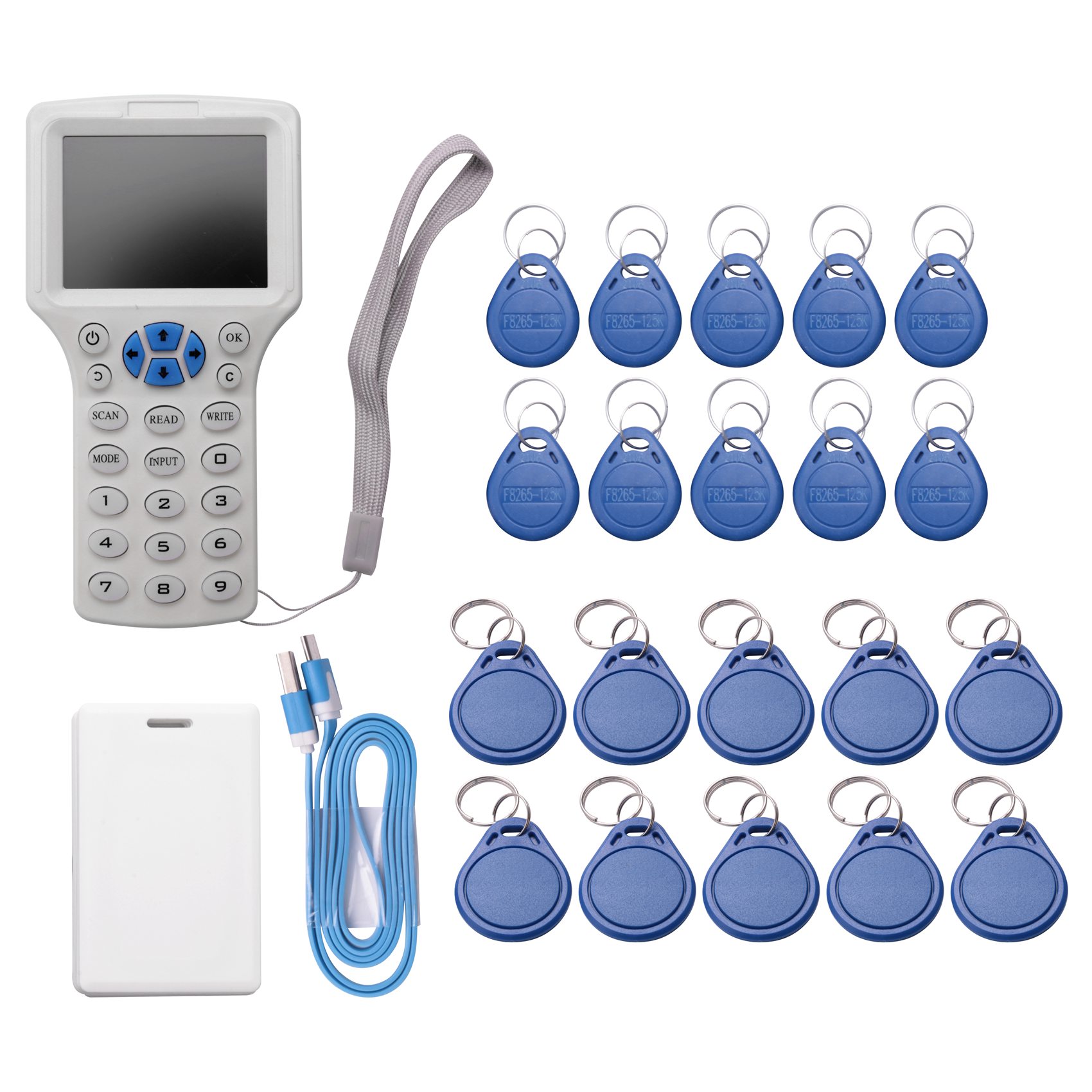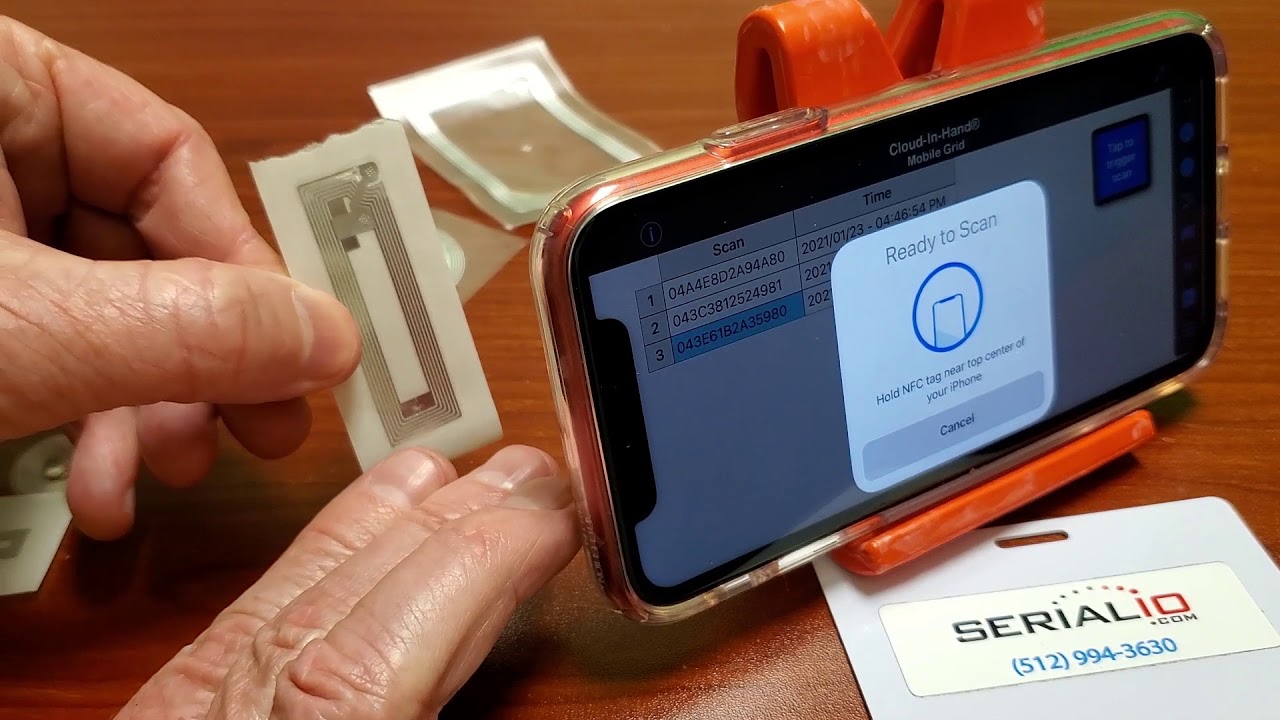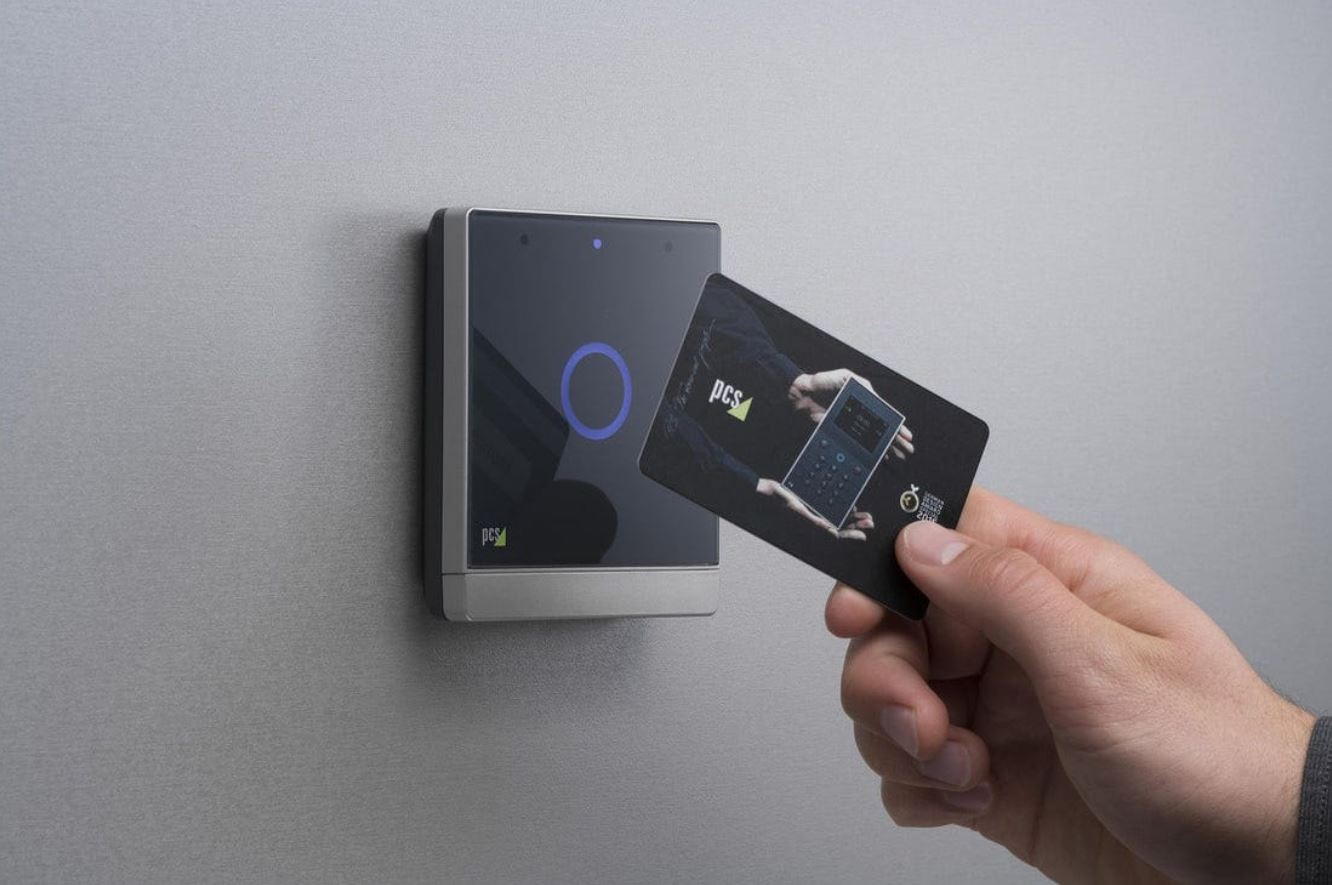Introduction
NFC (Near Field Communication) and RFID (Radio Frequency Identification) are two wireless communication technologies that have gained prominence in various industries. Both NFC and RFID enable the transfer of data wirelessly between devices or tags, but there exist some key differences between the two.
NFC is a short-range wireless communication technology that allows devices to establish communication within a few centimeters of proximity. It operates at a frequency of 13.56 MHz and is designed primarily for secure and convenient contactless transactions. RFID, on the other hand, is a broader term that encompasses a range of technologies that use radio waves to identify and track objects. It can operate at different frequencies, including low frequency (LF), high frequency (HF), and ultra-high frequency (UHF), depending on the application.
While both NFC and RFID utilize similar principles of wireless communication, they have distinguishing characteristics that make them suitable for specific use cases. Understanding the differences between NFC and RFID is crucial to determine which technology to employ in various applications.
Definition of NFC
Near Field Communication (NFC) is a short-range wireless communication technology that allows devices to establish communication and exchange data within a close range, typically up to 4 centimeters. It operates at a frequency of 13.56 MHz and is based on radio frequency identification (RFID) technology. NFC enables devices to communicate by bringing them close together or by touching them.
NFC technology incorporates two main components: the NFC reader, which is built into the device, and the NFC tag, which can be embedded in objects or integrated into smart cards, stickers, or even human implants. The NFC reader emits a radio frequency field that powers the NFC tag and initiates the data exchange process.
NFC offers a secure and convenient way to transmit small amounts of data quickly and easily. It provides a reliable and seamless experience for contactless transactions, information exchange, and device pairing. NFC can be used for various applications, including mobile payments, access control, public transportation ticketing, smart home automation, and more.
One of the distinguishing features of NFC is its ability to support three different modes of operation: Reader/writer mode, peer-to-peer mode, and card emulation mode. In reader/writer mode, the NFC-enabled device can read information from NFC tags, such as scanning a product for price comparison. In peer-to-peer mode, two NFC-enabled devices can exchange data, such as sharing files or initiating a Bluetooth pairing. In card emulation mode, the NFC-enabled device acts as a contactless smart card, allowing users to make secure payments or access restricted areas.
NFC technology is widely supported by mobile devices, including smartphones, tablets, and wearable devices. Most modern smartphones come equipped with NFC capabilities, allowing users to take advantage of the convenience and security offered by NFC-enabled applications.
In summary, NFC is a short-range wireless communication technology that enables devices to communicate by bringing them close together or by touching them. It provides a secure and convenient way to exchange data and enables a wide range of applications, making it an increasingly popular technology in today’s connected world.
Definition of RFID
Radio Frequency Identification (RFID) is a technology that uses radio waves to wirelessly identify and track objects. It involves the use of tags, which are small, electronic devices that can store and transmit data, and RFID readers, which communicate with the tags to retrieve the stored information. RFID operates at different frequencies, including low frequency (LF), high frequency (HF), and ultra-high frequency (UHF), depending on the specific application.
An RFID system consists of three key components: the RFID reader, the RFID tags, and the backend database. The RFID reader emits radio waves and receives signals from nearby tags, enabling communication. The RFID tags, also known as transponders, contain an antenna and a microchip that store data. When the tag comes into the range of the reader, it receives the radio waves, powers up, and transmits its information back to the reader. The backend database stores and manages the data collected from the RFID tags.
RFID technology offers numerous benefits, such as real-time asset tracking, inventory management, supply chain optimization, and enhanced security. It eliminates the need for line-of-sight communication, allowing for quick and automated data collection. RFID tags can be attached or embedded into various objects, including products, vehicles, ID cards, and even livestock, enabling efficient tracking and identification.
One of the advantages of RFID is its ability to operate over long distances, depending on the frequency utilized. LF RFID operates at a range of a few centimeters to a few meters, while HF RFID can have a range of up to one meter. UHF RFID, on the other hand, can achieve read ranges of up to 12 meters or more. The choice of frequency depends on the specific application requirements, such as the distance between the reader and the tags.
RFID technology finds application across various industries, including retail, logistics, healthcare, manufacturing, and agriculture. It enables efficient supply chain management, improves inventory accuracy, enhances asset tracking, and streamlines processes in diverse settings.
In summary, RFID is a wireless technology that uses radio waves to identify and track objects. It involves the use of RFID tags and readers to transmit and receive data. With its ability to operate at various frequencies and its wide range of applications, RFID technology plays a crucial role in modern-day asset tracking, inventory management, and process optimization.
Similarities between NFC and RFID
NFC (Near Field Communication) and RFID (Radio Frequency Identification) share several similarities due to their underlying technology and principles of wireless communication. While they do have their distinct characteristics, there are common traits that make them related technologies. Let’s explore some of the similarities between NFC and RFID:
1. Wireless Communication: Both NFC and RFID are wireless communication technologies. They utilize radio waves to facilitate communication between devices or tags without the need for physical contact or a direct line of sight. This wireless nature enables quick and convenient data exchange.
2. Tag/Reader Architecture: Both NFC and RFID systems consist of two main components: the tag and the reader. The tag, also known as a transponder, contains a microchip and an antenna. It stores information and responds to signals emitted by the reader. The reader, on the other hand, sends and receives signals to communicate with the tag and retrieve the stored data.
3. Contactless Operation: NFC and RFID both operate in a contactless manner. The tags or devices do not need to be physically connected or inserted into a reader or terminal for communication to occur. Instead, they can communicate via proximity or by bringing the device or tag close to the reader, usually within a few centimeters.
4. Data Exchange: NFC and RFID allow for the exchange of data between devices or tags and readers. The tags can store various types of information, such as product details, identification data, or transactional data. The reader can read and write data to the tags, enabling seamless data transfer.
5. Identification and Tracking: Both NFC and RFID technologies are used for identification and tracking purposes. They enable the unique identification of objects, assets, or individuals by associating them with specific tags. This identification can be utilized in supply chain management, access control, inventory tracking, and other applications that require accurate identification and tracking capabilities.
6. Integration with Mobile Devices: NFC and RFID technologies can be integrated into mobile devices, such as smartphones and tablets. Mobile devices equipped with NFC or RFID capabilities can leverage these technologies for various applications, including mobile payments, ticketing, and access control.
While NFC and RFID do exhibit similarities, it is important to note that they also have distinct characteristics that set them apart. Understanding these similarities and differences is essential in determining their suitability for specific applications and use cases.
Differences between NFC and RFID
Although NFC (Near Field Communication) and RFID (Radio Frequency Identification) share some similarities, they also have several key differences that set them apart. These differences relate to their frequency of operation, range, communication mode, and applications. Let’s explore the distinctions between NFC and RFID:
1. Frequency of Operation: NFC operates at a frequency of 13.56 MHz, whereas RFID technology can operate at different frequencies, including low frequency (LF, around 125-134 kHz), high frequency (HF, around 13.56 MHz), and ultra-high frequency (UHF, around 860-960 MHz). The frequency choice is made based on the specific requirements of the application, such as the desired data transfer rate and the range at which the communication needs to occur.
2. Range of Operation: NFC has a limited range of up to 4 centimeters, which is intentional to ensure secure and close-proximity communication. On the other hand, RFID can have a wider range depending on the frequency used. LF RFID typically has a range of a few centimeters to a few meters, HF RFID can have a range of up to one meter, and UHF RFID can achieve read ranges of up to 12 meters or more.
3. Communication Mode: NFC supports three modes of operation: reader/writer mode, peer-to-peer mode, and card emulation mode. In reader/writer mode, the NFC-enabled device can read information from NFC tags. In peer-to-peer mode, two NFC-enabled devices can exchange data. In card emulation mode, the NFC-enabled device acts as a contactless smart card. RFID, on the other hand, primarily operates in a reader/tag model, where the reader communicates with the tag to retrieve information.
4. Applications: NFC is commonly used for contactless payments, mobile ticketing, access control, and peer-to-peer data transfer in smartphones and other mobile devices. It enables secure and convenient transactions and interactions. RFID, on the other hand, finds application in various use cases such as inventory management, asset tracking, supply chain optimization, and ID card systems. RFID is prevalent in industries such as retail, logistics, healthcare, and manufacturing.
5. Security: NFC offers built-in security features such as encryption and mutual authentication between devices, providing a high level of security for contactless transactions. RFID, on the other hand, typically relies on the security measures implemented at the system level. Advanced security features can be added, but they are not inherent to the technology itself.
Understanding these differences is crucial in selecting the appropriate technology for specific applications. While NFC’s short range and secure communication make it suitable for applications like payment and ticketing, RFID’s wider range and diverse frequencies make it more suitable for asset tracking, inventory management, and supply chain optimization.
Frequency of Operation
The frequency of operation is a key differentiating factor between NFC (Near Field Communication) and RFID (Radio Frequency Identification) technologies. Each technology operates at a specific frequency range, which influences the communication capabilities and performance. Let’s explore the frequency ranges and their impact on the two technologies:
NFC operates at a frequency of 13.56 MHz. This frequency is regulated globally and is well-suited for short-range communication within a few centimeters. The choice of 13.56 MHz for NFC was based on considerations such as availability, licensing, and interference with other nearby frequencies. It provides a balance between data transfer rate and range, making it suitable for secure and seamless contactless transactions.
RFID, on the other hand, can operate at various frequencies, including low frequency (LF), high frequency (HF), and ultra-high frequency (UHF). LF RFID typically operates at a frequency range of 125-134 kHz, while HF RFID operates at around 13.56 MHz, similar to NFC. UHF RFID, on the other hand, operates at a higher frequency range of 860-960 MHz.
The choice of frequency in RFID depends on the specific application requirements. LF RFID offers a shorter read range but provides better performance in the presence of metals, liquids, or other materials that can interfere with RF signals. It is commonly used in applications such as animal tracking and access control systems.
HF RFID, operating at the same frequency as NFC, enables interoperability between NFC-enabled devices and HF RFID systems. This allows devices with NFC capabilities to read HF RFID tags and vice versa. HF RFID finds application in areas such as electronic ticketing, library management, and contactless payments.
UHF RFID, operating at higher frequencies, offers a longer read range compared to LF and HF RFID. It is well-suited for applications such as inventory management, logistics, and supply chain optimization, where the ability to read tags from a distance is crucial.
The frequency of operation impacts the communication range, data transfer rate, and the ability to penetrate materials. Lower frequencies have a shorter wavelength and are less affected by obstacles such as walls or liquids, but they generally have a shorter read range and lower data transfer rates. Higher frequencies have a longer read range but may be more susceptible to interference from materials like water or metal.
In summary, NFC operates at a frequency of 13.56 MHz, while RFID can operate at various frequencies, including LF, HF, and UHF. The frequency of operation influences the range, data transfer rate, and performance in different applications. Understanding the frequency requirements is essential in selecting the appropriate technology for specific use cases.
Range of Operation
The range of operation is an important consideration when comparing the capabilities of NFC (Near Field Communication) and RFID (Radio Frequency Identification) technologies. The range refers to the distance at which communication can occur between devices or tags and readers. Let’s explore the range of operation for both NFC and RFID:
NFC has a limited range of operation, typically up to 4 centimeters. This close proximity is intentional and has been designed to ensure secure and reliable communication between devices. The short range makes NFC suitable for applications that require close-range interaction, such as contactless payments, ticketing, and access control systems. The close proximity requirement also adds an additional layer of security, as it prevents unintentional or unauthorized communication.
RFID, on the other hand, offers a wider range of operation depending on the frequency used. LF RFID (low frequency) typically has a range of a few centimeters to a few meters. HF RFID (high frequency) can have a range of up to one meter, and UHF RFID (ultra-high frequency) can achieve read ranges of up to 12 meters or more, depending on the specific system and environment.
The range of operation in RFID is determined by various factors, including the frequency, power output of the reader, and environmental conditions. UHF RFID tags and readers, with their longer read range, are commonly used in applications such as inventory management, logistics, and supply chain optimization. These applications benefit from the ability to quickly and accurately identify objects or assets from a distance, often without the need for line-of-sight communication.
It’s important to note that the range of operation in both NFC and RFID can be influenced by environmental factors. Physical barriers, interference from other wireless devices, or electromagnetic noise can affect the effective range of communication. The presence of metals, liquids, or other materials can also attenuate or block radio frequency signals, further affecting the range.
In summary, NFC has a limited range of operation of up to 4 centimeters, while RFID offers a wider range depending on the frequency used. LF RFID typically has a range of a few centimeters to a few meters, HF RFID can have a range of up to one meter, and UHF RFID can achieve read ranges of up to 12 meters or more. The range of operation is an important consideration when choosing the appropriate technology for specific applications, taking into account the desired communication distance and environmental factors.
Communication Mode
The communication mode is an important aspect to consider when comparing NFC (Near Field Communication) and RFID (Radio Frequency Identification) technologies. The communication mode refers to the way in which devices or tags interact and exchange data with readers. Let’s explore the different communication modes supported by NFC and RFID:
NFC supports three main modes of operation: reader/writer mode, peer-to-peer mode, and card emulation mode.
1. Reader/Writer Mode: In this mode, the NFC-enabled device acts as a reader and can read information from NFC tags. The reader emits radio waves that power the NFC tag and retrieve the stored data. Reader/writer mode allows for various applications, such as scanning products for price comparison, retrieving information from NFC-enabled posters, or accessing data from smart cards.
2. Peer-to-Peer Mode: NFC-enabled devices can communicate with each other in peer-to-peer mode. This mode allows for the exchange of data between devices, such as sharing files, initiating a Bluetooth pairing, or establishing a Wi-Fi connection. Peer-to-peer mode enables easy and convenient data transfer between NFC-enabled smartphones, tablets, or other devices.
3. Card Emulation Mode: NFC allows an NFC-enabled device to emulate a contactless smart card. In this mode, the device acts as a virtual smart card, enabling users to make secure transactions, access restricted areas, or interact with contactless card readers. Card emulation mode is commonly used in mobile payment systems, access control systems, and identification systems.
RFID primarily operates in a reader/tag model, where the reader communicates with the tag to retrieve information. The RFID reader emits radio waves, while the tag responds with the stored data. The communication mode in RFID is unidirectional, with the reader initiating the communication and the tag providing the response.
The communication in RFID is typically limited to reading data from the tag, although some advanced RFID systems do support writing data to the tag as well. RFID tags are often used for applications such as inventory management, asset tracking, or supply chain optimization, where the focus is on tracking and identifying objects rather than interacting with devices.
The communication modes in both NFC and RFID enable different functionalities and applications. NFC’s support for reader/writer mode, peer-to-peer mode, and card emulation mode makes it versatile and suitable for a wide range of applications, including mobile payments, data exchange, and access control. The primarily unidirectional communication mode in RFID makes it efficient for tracking and identification purposes.
In summary, NFC supports reader/writer mode, peer-to-peer mode, and card emulation mode, while RFID operates in a reader/tag model with primarily one-way communication. Understanding the communication modes is important in selecting the appropriate technology for specific applications, considering the desired interaction capabilities and functionality requirements.
Applications of NFC
NFC (Near Field Communication) technology offers a wide range of applications across various industries. The secure and convenient wireless communication provided by NFC enables seamless and efficient interactions between devices and tags. Let’s explore some common applications of NFC:
1. Mobile Payments: NFC-enabled smartphones and wearable devices can be used for contactless payments. By simply tapping or bringing the device close to an NFC-enabled payment terminal, users can make quick and secure transactions. NFC-based mobile payment platforms, such as Apple Pay and Google Pay, have gained popularity and are widely accepted by merchants around the world.
2. Access Control and Security: NFC technology is utilized in access control systems to grant authorized individuals entry to restricted areas. NFC-enabled ID cards or badges can be scanned by NFC readers to verify the identity and grant access. This application is commonly used in offices, hospitals, educational institutions, and other facilities where secure authentication and access control are essential.
3. Public Transportation Ticketing: NFC is widely used in public transportation systems for electronic ticketing. NFC-enabled smart cards or mobile devices can be used to tap and pay for bus, train, or subway fares. This provides convenience for commuters and reduces the dependency on physical tickets or tokens.
4. Bluetooth Pairing and Data Transfer: NFC simplifies the process of pairing Bluetooth devices and transferring data between NFC-enabled devices. By tapping or bringing two NFC-equipped devices close together, users can initiate the pairing process and establish a Bluetooth connection. This enables quick and effortless data sharing between smartphones, tablets, headphones, and other compatible devices.
5. Loyalty Programs and Marketing: NFC technology is leveraged in loyalty programs and marketing campaigns. NFC tags can be embedded in posters, banners, or product displays, allowing users to tap their NFC-enabled devices to receive promotional content, discounts, or loyalty rewards. This provides a convenient and interactive way for businesses to engage with customers and enhance brand loyalty.
6. Smart Home Automation: NFC can be utilized in smart home automation systems to control various devices within the home. By placing an NFC tag near a door, for example, users can simply tap their smartphone to activate a specific set of actions, such as unlocking the door, adjusting the lighting, or turning on the music.
These are just a few examples of the many applications of NFC technology. Its versatility, security, and ease of use make it a popular choice for various industries. As NFC continues to evolve and gain more widespread adoption, we can expect to see even more innovative applications in the future.
Applications of RFID
RFID (Radio Frequency Identification) technology has a wide range of applications across various industries due to its ability to track and identify objects wirelessly. Let’s explore some common applications of RFID:
1. Inventory Management: RFID is widely used in inventory management systems to improve efficiency and accuracy. RFID tags can be attached to products or packaging, allowing for real-time tracking of items as they move through the supply chain. This enables businesses to automate inventory tracking, reduce manual errors, and streamline the replenishment process.
2. Asset Tracking: RFID tags are used to track and manage assets such as equipment, vehicles, and tools. By affixing RFID tags to assets, businesses can easily locate and monitor their valuable resources. This is particularly useful in industries such as healthcare, manufacturing, and logistics, where the ability to quickly locate assets and optimize their utilization is critical.
3. Supply Chain Optimization: RFID technology plays a crucial role in supply chain optimization by improving visibility and traceability. RFID tags can be applied to crates, pallets, or containers to accurately track the movement of goods throughout the supply chain. This enables businesses to enhance inventory accuracy, reduce errors, minimize loss, and improve the overall efficiency of the supply chain.
4. Retail Operations: RFID is widely used in the retail industry for various purposes. It enables retailers to improve inventory accuracy and reduce stockouts by continuously monitoring stock levels. RFID-enabled systems can quickly identify misplaced items, prevent theft, and streamline the checkout process through contactless payment and self-checkout systems.
5. Healthcare: RFID is used in healthcare applications to enhance patient safety, improve asset management, and increase operational efficiency. RFID tags can be attached to medical equipment, ensuring their availability when needed and enabling quick and accurate identification. RFID wristbands can also facilitate patient identification, medication administration, and access control in healthcare facilities.
6. Livestock and Agriculture: RFID tags are commonly used in livestock and agriculture industries for animal identification, tracking, and management. RFID tags can be embedded in animals or attached to their ear tags, allowing for individual animal identification, traceability, and monitoring of health records. In agriculture, RFID is used for tracking agricultural products, managing inventory, and ensuring product authenticity.
These are just a few examples of the diverse applications of RFID technology. With its ability to accurately track and identify objects wirelessly, RFID is widely adopted across industries for improving operational efficiency, enhancing security, and streamlining processes.
Conclusion
NFC (Near Field Communication) and RFID (Radio Frequency Identification) are two wireless communication technologies that offer unique capabilities and have gained prominence in various industries. While they share some similarities, such as their use of wireless communication and tag/reader architecture, there are distinct differences that set them apart.
NFC operates at a frequency of 13.56 MHz and is designed for secure and convenient contactless transactions. It supports reader/writer mode, peer-to-peer mode, and card emulation mode, making it versatile for applications such as mobile payments, access control, and data sharing between devices.
RFID, on the other hand, operates at different frequencies, including LF, HF, and UHF, depending on the specific application. It primarily operates in a reader/tag model and is commonly used for inventory management, asset tracking, supply chain optimization, and other applications that require tracking and identification.
Understanding the differences between NFC and RFID is essential in selecting the appropriate technology for specific applications. Factors such as frequency of operation, range, communication mode, and application requirements play a crucial role in determining the suitability of each technology.
NFC finds applications in contactless payments, access control, public transportation ticketing, and more. Its secure and convenient communication makes it a popular choice for various industries, enhancing user experiences and providing secure transactions.
RFID technology is prevalent in inventory management, asset tracking, supply chain optimization, and other situations where real-time tracking and identification of objects are needed. Its ability to operate at different frequencies and offer longer read ranges makes it suitable for diverse industries and environments.
As NFC and RFID technologies continue to evolve and advance, we can expect to see further innovation and expansion in their applications. Businesses and industries can leverage the capabilities of NFC and RFID to improve operational efficiency, enhance security, and streamline processes.
In a world that increasingly relies on wireless communication and seamless data exchange, NFC and RFID technologies play vital roles in enabling secure transactions, efficient supply chains, and enhanced user experiences.







